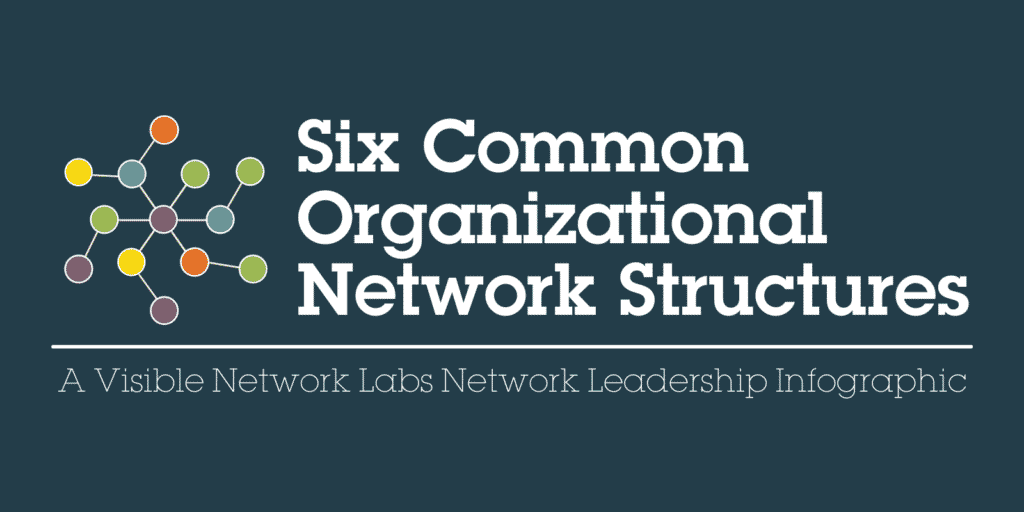
Organizational Network Structures: 6 Common Examples
There are many different ways to structure a network… for example, in a decentralized structure, everyone in a network can be connected to everyone else, while in a centralized structure, everyone connects to a single, central entity. Each of these organizational network structures has its own benefits and drawbacks; there is no single best way to structure a network. They key is thinking and reflecting on your network context, purpose, and goals to pick from these organizational network structures.
The infographic below shares six common examples or organizational network structures. However, keep in mind that it is also common to mix elements of two or more different structure types, to gain greater advantage and correct for any structural disadvantages. Flexibility and adaptability are key when thinking about organizational network structures.
Looking for more help thinking about your own network structure? Contact our team to setup a free consultation so we can learn more about your needs and recommend a path forward to find a solution.

Want to learn more about the many different kinds of organizational network structures? Visit our Network Leadership Resource Library to see blogs, webinars and other infographics on this very important network leadership topic. You can also share a comment below with the VNL community to add your thoughts on the subject. We hope you found our infographic helpful and informative!




